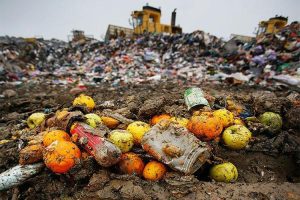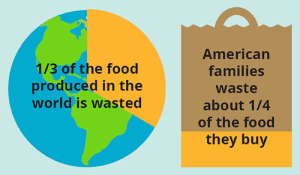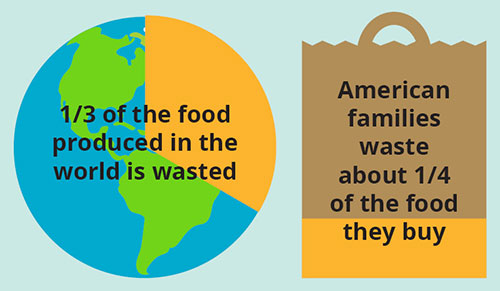In the land of plenty, where supermarkets are stocked with an abundance of fresh produce, and restaurants serve generous portions, a darker reality lurks behind the scenes. America, a nation known for its prosperity and excess, is also a champion in a less glamorous category – food waste. The scale of this issue is staggering, with consequences that reach far beyond overflowing trash bins. In this deep dive, we will unravel the shocking reality of food waste in America, exploring the statistics, key facts, and the implications of a wasteful food culture.
The Numbers Speak Volumes
To comprehend the magnitude of food waste in the United States, one must first grapple with the staggering statistics. According to the United States Department of Agriculture (USDA), approximately 30 to 40 percent of the food supply is wasted annually. This translates to over 133 billion pounds and $161 billion worth of food discarded each year. To put it in perspective, this amount could feed millions of hungry mouths and alleviate food insecurity on a significant scale.

From Farm to Table: The Broken Chain
The journey of food from farm to table is riddled with inefficiencies and waste. A significant portion of food waste occurs at the production and distribution stages. Farmers often discard crops that don’t meet aesthetic standards or are surplus to market demand. Misshapen fruits, vegetables with minor imperfections, and surplus grains are left to rot in fields, contributing to a substantial loss of edible produce.
Distribution channels also play a role in this wasteful narrative. Retailers, faced with the pressure to maintain pristine displays, frequently discard items approaching their sell-by dates, even though the food remains safe for consumption. Additionally, transportation inefficiencies contribute to spoilage, as perishable goods may go bad during transit due to delays or improper storage conditions.
The Consumer Conundrum
While production and distribution contribute significantly to food waste, the end consumer is also a key player in this wasteful symphony. In households across the nation, a disconnect between purchasing habits and consumption patterns leads to an alarming amount of food tossed into garbage bins.
One contributing factor is the tendency to buy in bulk during sales or special offers, often resulting in more than can be reasonably consumed before expiration. A lack of awareness about proper food storage and preservation techniques further exacerbates the issue. Leftovers are forgotten at the back of refrigerators, fresh produce wilts in crisper drawers, and expired items are discarded without a second thought.
The Economic and Environmental Toll
Beyond the moral imperative to address food waste lies a pressing economic and environmental concern. The financial impact of discarding billions of pounds of food annually is staggering. Businesses lose revenue, and consumers unknowingly contribute to higher prices as companies attempt to recover losses.
Moreover, the environmental toll is immense. Decomposing food waste in landfills produces methane, a potent greenhouse gas that contributes to climate change. The resources invested in producing, transporting, and disposing of wasted food further strain our already burdened ecosystems. Reducing food waste is not only a moral obligation but a necessity for the sustainability of our planet.
Initiatives and Solutions
Fortunately, awareness of the food waste epidemic is growing, and initiatives are underway to address the issue. From farm-level efforts to redistribute surplus produce to food banks, to innovative technologies that extend the shelf life of perishable goods, a range of solutions is being explored.
At the consumer level, education campaigns about proper meal planning, understanding expiration dates, and creative ways to use leftovers are essential. Food rescue organizations are working tirelessly to redirect surplus food from businesses and consumers to those in need, mitigating both food waste and food insecurity.

Conclusion: A Call to Action
As we navigate the eye-opening reality of food waste in America, it becomes clear that each of us plays a role in this intricate system. From farmers to consumers, businesses to policymakers, a collective effort is required to reverse this trend. The shocking statistics should not be met with apathy but rather with a sense of urgency and responsibility.
By embracing mindful consumption, supporting initiatives that tackle food waste, and advocating for systemic changes in the food supply chain, we can begin to dismantle the wasteful culture that permeates our society. The shocking reality of food waste in America is an opportunity for change, a chance to redefine our relationship with food, and a call to action for a more sustainable and compassionate future.










